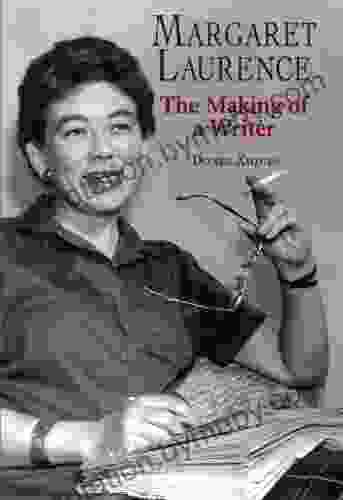Africanist Aesthetics and Equity in the Twenty-First Century

Africanist aesthetics, rooted in the rich artistic traditions of the African continent, offer a unique and powerful lens through which we can examine and address issues of equity and social justice in the 21st century. By embracing the principles of Africanist aesthetics, we can create more inclusive and equitable societies that value the contributions of all cultures and perspectives.
5 out of 5
| Language | : | English |
| File size | : | 18399 KB |
| Text-to-Speech | : | Enabled |
| Screen Reader | : | Supported |
| Enhanced typesetting | : | Enabled |
| Word Wise | : | Enabled |
| Print length | : | 289 pages |
One of the key principles of Africanist aesthetics is the concept of Ubuntu, which emphasizes the interconnectedness of all human beings. This principle teaches us that we are all part of a larger community and that our actions have an impact on others. When we embrace Ubuntu, we are more likely to act with compassion and empathy towards others, and to work together to create a more just and equitable world.
Another important principle of Africanist aesthetics is the concept of Sankofa, which means "to go back and fetch it." This principle teaches us that we can learn from the past in Free Download to create a better future. When we embrace Sankofa, we are more likely to be open to new ideas and perspectives, and to learn from the mistakes of the past.
Finally, Africanist aesthetics emphasizes the importance of beauty and creativity. This principle teaches us that beauty is not simply a matter of aesthetics, but also a matter of truth and justice. When we create beautiful things, we are also creating a more just and equitable world.
By embracing the principles of Africanist aesthetics, we can create more inclusive and equitable societies that value the contributions of all cultures and perspectives. We can learn from the past, create a better future, and make the world a more beautiful place.
Examples of Africanist Aesthetics in Action
There are many examples of Africanist aesthetics being used to promote equity and social justice in the 21st century. Here are a few:
- The Truth and Reconciliation Commission in South Africa used Africanist aesthetics to create a process of healing and reconciliation after the apartheid era. The commission's logo, for example, featured a traditional African symbol of unity and healing.
- The Museum of African Diaspora in San Francisco uses Africanist aesthetics to tell the story of the African diaspora and to promote cross-cultural understanding. The museum's collection includes a wide range of African art and artifacts, as well as works by contemporary African and African-American artists.
- The Black Lives Matter movement uses Africanist aesthetics to raise awareness of police brutality and racial injustice. The movement's logo, for example, features a raised fist, which is a symbol of resistance and empowerment.
These are just a few examples of how Africanist aesthetics can be used to promote equity and social justice. By embracing the principles of Africanist aesthetics, we can create a more just and equitable world for all.
Africanist aesthetics offer a powerful and unique perspective on issues of equity and social justice. By embracing the principles of Africanist aesthetics, we can create more inclusive and equitable societies that value the contributions of all cultures and perspectives. We can learn from the past, create a better future, and make the world a more beautiful place.
5 out of 5
| Language | : | English |
| File size | : | 18399 KB |
| Text-to-Speech | : | Enabled |
| Screen Reader | : | Supported |
| Enhanced typesetting | : | Enabled |
| Word Wise | : | Enabled |
| Print length | : | 289 pages |
Do you want to contribute by writing guest posts on this blog?
Please contact us and send us a resume of previous articles that you have written.
 Book
Book Novel
Novel Page
Page Chapter
Chapter Text
Text Story
Story Genre
Genre Reader
Reader Library
Library Paperback
Paperback E-book
E-book Magazine
Magazine Newspaper
Newspaper Paragraph
Paragraph Sentence
Sentence Bookmark
Bookmark Shelf
Shelf Glossary
Glossary Bibliography
Bibliography Foreword
Foreword Preface
Preface Synopsis
Synopsis Annotation
Annotation Footnote
Footnote Manuscript
Manuscript Scroll
Scroll Codex
Codex Tome
Tome Bestseller
Bestseller Classics
Classics Library card
Library card Narrative
Narrative Biography
Biography Autobiography
Autobiography Memoir
Memoir Reference
Reference Encyclopedia
Encyclopedia Don Nardo
Don Nardo Robert K Wysocki
Robert K Wysocki Renata Sterling
Renata Sterling James Seabright
James Seabright Diet Eman
Diet Eman Nurse Academy
Nurse Academy Laura Moss White
Laura Moss White Dominique Souder
Dominique Souder Don Harris
Don Harris Michael Wenz
Michael Wenz Sascha Alper
Sascha Alper Deborah Underwood
Deborah Underwood Donda West
Donda West Delaney Ruston
Delaney Ruston Sir David Tang
Sir David Tang Deitra Leonard Lowdermilk
Deitra Leonard Lowdermilk Ivar Dedekam
Ivar Dedekam R E Skibiski
R E Skibiski Don Smith
Don Smith Diana B Henriques
Diana B Henriques
Light bulbAdvertise smarter! Our strategic ad space ensures maximum exposure. Reserve your spot today!

 Caleb LongUnlock the Secrets of Effortless Sailing: Master the Art with "The Sail Trim...
Caleb LongUnlock the Secrets of Effortless Sailing: Master the Art with "The Sail Trim...
 Isaac BellIn Search of the Lost Tastes of France: A Journey Through Gastronomic History...
Isaac BellIn Search of the Lost Tastes of France: A Journey Through Gastronomic History...
 Beau CarterGnamma Abner Fortis Ismc: The Ultimate Guide to Surviving and Thriving in the...
Beau CarterGnamma Abner Fortis Ismc: The Ultimate Guide to Surviving and Thriving in the... Cormac McCarthyFollow ·10.6k
Cormac McCarthyFollow ·10.6k Rod WardFollow ·15.5k
Rod WardFollow ·15.5k F. Scott FitzgeraldFollow ·15.7k
F. Scott FitzgeraldFollow ·15.7k Robert FrostFollow ·14.9k
Robert FrostFollow ·14.9k Jake PowellFollow ·14k
Jake PowellFollow ·14k Ross NelsonFollow ·19.1k
Ross NelsonFollow ·19.1k Jayson PowellFollow ·18.9k
Jayson PowellFollow ·18.9k Bret MitchellFollow ·18.3k
Bret MitchellFollow ·18.3k

 Cruz Simmons
Cruz SimmonsGuide To Pencak Silat Kuntao And Traditional Weapons:...
Immerse yourself in the captivating world of...

 Dalton Foster
Dalton FosterUnlock Your Financial Freedom: Dive into the ABCs of Real...
Are you ready to embark on a...

 George Orwell
George OrwellThe Advanced Guide to Real Estate Investing: Your...
Are you ready to embark on...

 Will Ward
Will WardMargaret Laurence: The Making of a Writer
Margaret Laurence (1926-1987) was one of...

 Jorge Amado
Jorge AmadoThe ABCs of Property Management: A Comprehensive Guide...
Owning and managing rental...
5 out of 5
| Language | : | English |
| File size | : | 18399 KB |
| Text-to-Speech | : | Enabled |
| Screen Reader | : | Supported |
| Enhanced typesetting | : | Enabled |
| Word Wise | : | Enabled |
| Print length | : | 289 pages |








